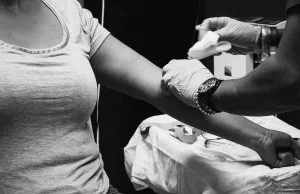The Potentials of Platelet Rich Plasma
There is a world of prospective treatments for people experiencing a variety of discomforts and injuries. From menisci tears to Golfer’s Elbow, the group of professionals and patients that choose Platelet-Rich Plasma (PRP) grows yearly, as does the research behind it. To better understand this procedure, defining some of the words provides the most comprehension.
- Platelet – This component of blood enables clotting when the body recognizes damaged blood vessels. Also known as thrombocytes, platelets can be indicators of good or poor health, and are now part of the growing experimental health community.
- Autologous – In this case, platelets that are derived from ones own self. The platelets are an autologous blood product, meaning they came right from the blood in your body.
- Platelet Derived Growth Factor – Growth Factors are proteins that promote development and multiplication of cells, and encourage the repair of tissues. The supported theory behind using the platelets is that they can heal and regenerate tissues in areas that are damaged or missing by using their intrinsic growth hormone.
What is PRP?
Platelets are the product after blood is separated into its solid and liquid components of blood cells and plasma with platelets, respectively. This concentrated product of platelets comes from the process of separation and isolation of blood. In the case of treatment, the PRP is autologous, and provides use in different locations on the body. Scientists and other medical professionals want these platelets in the hope that the Platelet Derived Growth Factor can promote tissue healing. Once medical professionals isolate the patient’s platelets, they are then injected back into the injured area which creates a local inflammatory response. This natural treatment promotes the healing process, and shortens rehabilitation time. The processes to treat patients with their platelets vary, but the hoped end-result is the same: offer a therapeutic, regenerative treatment for a patient’s damaged cells and tissues.
PRP in Knee Injuries
In a review published b EFORT Open Reviews detailed the impact of platelet-rich plasma on various knee disorders.
There are various benefits for multiple injuries including but not limited to: ALC reconstruction, muscular trauma, and osteoarthritis (OA). This detailed review provides exceptional information on the processes, various research protocols, and other aspects to this treatment.
Talk with your primary physician and physical therapists at Mid-County Physical Therapy should you have an interest in this treatment.


